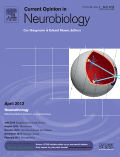
ACTA NEUROBIOLOGIAE EXPERIMENTALIS
Scope & Guideline
Exploring the Depths of Neuroscience Research
Introduction
Aims and Scopes
- Neuropharmacology and Drug Effects:
The journal publishes research on the effects of various drugs, including opioids, cannabinoids, and antidepressants, on the nervous system, examining their mechanisms of action and potential therapeutic benefits. - Neuroprotection and Neurodegeneration:
Research focused on neuroprotective strategies and the molecular mechanisms underlying neurodegenerative diseases, such as Alzheimer's and Parkinson's, is a core area of interest. - Neuroinflammation and Immune Response:
Studies exploring the role of the immune system in neurological conditions, including the impact of inflammatory processes on neurodegeneration and recovery, are frequently featured. - Behavioral Neuroscience:
The journal highlights research that connects behavioral outcomes with neurobiological changes, investigating how drugs, stress, and environmental factors influence behavior. - Neurodevelopment and Neuroplasticity:
Research on the mechanisms of neurodevelopment and the plasticity of neural circuits across different conditions, including aging and injury, is a significant focus. - Molecular and Cellular Mechanisms:
The journal emphasizes studies that delve into the molecular and cellular mechanisms that govern neuronal function and pathology, including gene expression and signaling pathways.
Trending and Emerging
- Gut-Brain Axis Research:
Increasing attention is being paid to the interactions between gut microbiota and neurological health, particularly in relation to conditions like hepatic encephalopathy and neuroinflammation. - Biomarkers and Prognostic Indicators:
There is a rising trend in identifying biomarkers for neurological diseases, which may serve as prognostic indicators and aid in the development of personalized treatment strategies. - Neurotechnology and Imaging Techniques:
The use of advanced imaging techniques and neurotechnological methods to study brain function and structure is gaining prominence, reflecting a broader trend towards integrating technology in neuroscience. - Stress and Neurobehavioral Studies:
Research focusing on the effects of stress on neurobiology and behavior is becoming more prevalent, highlighting the importance of psychological factors in neurological health. - Neuroinflammation as a Therapeutic Target:
There is an emerging interest in targeting neuroinflammation for therapeutic purposes, with studies exploring anti-inflammatory strategies in the context of various neurological disorders.
Declining or Waning
- Traditional Herbal Medicine Research:
There has been a noticeable decrease in studies specifically focused on traditional herbal remedies and their neuroprotective effects, suggesting a shift towards more contemporary pharmacological approaches. - Psychological and Behavioral Studies:
Research examining psychological aspects of neurological diseases, such as mood disorders related to neurodegeneration, appears less frequently, indicating a potential shift towards more biological and mechanistic studies. - Neurogenesis Studies:
The exploration of neurogenesis as a therapeutic target seems to be waning, with fewer papers addressing the generation of new neurons in adult brains compared to previous years.
Similar Journals

NEUROMOLECULAR MEDICINE
Connecting Molecular Science with Neurological HealthNEUROMOLECULAR MEDICINE, published by HUMANA PRESS INC, is a prestigious peer-reviewed journal dedicated to advancing the fields of cellular and molecular neuroscience, molecular medicine, and neurology. With an ISSN of 1535-1084 and an E-ISSN of 1559-1174, the journal boasts a significant presence in academic research since its inception in 2002 and continues to publish cutting-edge studies through 2024. Ranked in the Q2 category for 2023 in various disciplines, including Neuroscience and Molecular Medicine, it holds impressive positions in Scopus rankings, including 41st out of 192 in Neuroscience and Neurology. Although not an open access journal, NEUROMOLECULAR MEDICINE remains invaluable for researchers, professionals, and students seeking to explore the intricate relationships between molecular mechanisms and neurological functions, thereby contributing to the scientific understanding of nervous system diseases and therapeutic innovations.

CELLULAR AND MOLECULAR NEUROBIOLOGY
Exploring the Nexus of Cell Biology and Neuroscience.CELLULAR AND MOLECULAR NEUROBIOLOGY, published by SPRINGER/PLENUM PUBLISHERS, stands as a significant contributor to the fields of cell biology and neuroscience, holding a distinguished position in the academic community with an impact factor that places it in the Q2 category for both Cell Biology and Cellular and Molecular Neuroscience, along with Q1 in Medicine (miscellaneous). Since its inception in 1981, this journal has provided a critical platform for innovative research and thought-provoking reviews, fostering a deeper understanding of complex neurobiological mechanisms. The journal’s rigorous peer-review process ensures the publication of high-quality manuscripts that offer valuable insights into cellular processes and neural functions. With a commitment to advancing knowledge and promoting collaboration among researchers, CELLULAR AND MOLECULAR NEUROBIOLOGY remains an essential resource for professionals and students alike, looking to stay updated on the latest developments in neurobiology.

MOLECULAR AND CELLULAR NEUROSCIENCE
Connecting Theories and Discoveries in NeuroscienceMOLECULAR AND CELLULAR NEUROSCIENCE, published by Academic Press Inc Elsevier Science, is a pivotal journal dedicated to the expansive fields of Cellular and Molecular Neuroscience, providing a platform for the dissemination of innovative research and theoretical advancements since its establishment in 1990. With an ISSN of 1044-7431 and a commitment to high scholarly standards, this journal holds a notable Q2 ranking in key categories such as Cell Biology and Molecular Biology, highlighting its significant impact within the academic community. Although currently not an Open Access journal, it offers a wealth of insightful contributions aimed at fostering understanding and collaboration among researchers, professionals, and students. The journal's ongoing publication trajectory through to 2024 guarantees a continuous flow of cutting-edge research that is critical for addressing complex questions in neuroscience. As it plays a crucial role in advancing our understanding of molecular mechanisms underpinning neural function and pathology, MOLECULAR AND CELLULAR NEUROSCIENCE remains an essential reference for anyone invested in these dynamic fields.

NEUROSCIENTIST
Advancing the Frontiers of Neurological ScienceNEUROSCIENTIST is a leading journal in the field of clinical neurology and neuroscience, published by SAGE Publications Inc. With an impressive impact factor reflected in its Q1 quartile ranking in both clinical neurology and miscellaneous neuroscience as of 2023, this journal positions itself as a crucial platform for the latest research and advancements in the neural sciences. Spanning from 1995 to 2024, NEUROSCIENTIST features a range of high-quality, peer-reviewed articles that cater to researchers, practitioners, and students alike. Although it does not offer Open Access options, the journal remains a vital resource owing to its Scopus rankings, situating it within the top percentile of its categories: ranked #28 out of 400 in clinical neurology and #15 out of 113 in general neuroscience. The journal's commitment to disseminating significant findings underlines its importance in fostering advancements in neurological understanding and treatment.

BRAIN RESEARCH
Unlocking the mysteries of the brain, one study at a time.BRAIN RESEARCH is a premier journal published by Elsevier, specializing in the intricate domains of neuroscience, developmental biology, and molecular biology. Established in 1966, this esteemed publication has become a cornerstone for researchers, professionals, and students dedicated to advancing our understanding of brain function and disorders. With an impressive impact factor and a consistent presence in the Q2 quartiles across key categories—such as Developmental Biology, Neurology, and Neuroscience—it stands out as an essential resource for disseminating innovative research and pioneering insights. The journal's scope encompasses both clinical and fundamental studies, fostering a multidisciplinary approach to the complexities of neural systems. Although it is not an open-access journal, BRAIN RESEARCH provides a vital platform for sharing progressive findings that can inspire future studies and contribute significantly to the evolutionary discourse in neuroscience. Based in the Netherlands, at RADARWEG 29, 1043 NX AMSTERDAM, BRAIN RESEARCH continues to shape the landscape of neuroscience research, inviting submissions that explore the latest discoveries and therapeutic strategies.

MOLECULAR NEUROBIOLOGY
Illuminating Pathways in Neurobiology ResearchWelcome to Molecular Neurobiology, the premier journal dedicated to the exploration of the molecular mechanisms underlying nervous system function and pathophysiology. Published by Springer, this journal provides an essential platform for disseminating high-quality research in the rapidly evolving fields of Cellular and Molecular Neuroscience and Neurology, boasting an impressive impact factor that reflects its esteemed position within the academic community. With its ranking in the Q1 and Q2 quartiles for various neuroscience categories, Molecular Neurobiology stands at the forefront of groundbreaking discoveries, showcasing innovative studies that bridge basic science and clinical application. Researchers and professionals are invited to contribute to its rich portfolio, which spans from fundamental insights into cellular processes to advanced therapeutic strategies. Although Molecular Neurobiology does not operate as an Open Access journal, its influential body of work remains accessible through institutional and personal subscriptions. As we converge from 1987 to 2024, we continue to aim for excellence, seeking to catalyze progress in understanding neurological diseases and enhance the scientific dialogue within the neuroscience community.

NEUROCHEMICAL RESEARCH
Illuminating the connections between neurochemistry and disease.NEUROCHEMICAL RESEARCH, published by Springer/Plenum Publishers, is a pivotal journal in the fields of biochemistry, neuroscience, and cellular and molecular studies. With an impressive impact factor that positions it within the prestigious Q1 category in Biochemistry and Medicine and Q2 in Cellular and Molecular Neuroscience, it provides a robust platform for the dissemination of cutting-edge research findings. Since its inception in 1976, the journal has played a crucial role in bridging the gap between neurochemical processes and neurological health, making significant contributions to our understanding of brain function and disease. Researchers and professionals are encouraged to engage with a wealth of high-quality articles that not only advance the field but also inform clinical practices. Located in the heart of New York, the journal continues to uphold its reputation as a leader in promoting innovative research that is essential for both academic and applied sciences.

NATURE NEUROSCIENCE
Driving Excellence in Neuroscientific DiscoveryNATURE NEUROSCIENCE is a premier journal published by NATURE PORTFOLIO, focusing on cutting-edge research in the field of neuroscience. With an esteemed impact factor that reflects its significance in the academic community, this journal occupies an exceptional place in the 2023 Q1 category for neuroscience (miscellaneous) and boasts a leading Scopus rank of #1 out of 113 in general neuroscience, placing it within the top 1st percentile. Since its inception in 1998, NATURE NEUROSCIENCE has consistently delivered high-quality, peer-reviewed articles that contribute to our understanding of the nervous system, driving innovation and scholarship across disciplines. Although it does not offer open access, the journal remains a vital resource for researchers, professionals, and students seeking to stay at the forefront of neuroscientific discovery and discussion. Its editorial commitment to excellence ensures that it continually shapes the trajectory of neuroscience research well into 2024 and beyond, making it an indispensable asset for anyone passionate about the brain and its complexities.

CURRENT OPINION IN NEUROBIOLOGY
Advancing Knowledge in Neuroscience DynamicsCURRENT OPINION IN NEUROBIOLOGY, published by CURRENT BIOLOGY LTD, stands as a premier interdisciplinary journal in the field of neuroscience, specifically focusing on the latest advancements and emerging trends in neurobiology. With an impressive impact factor bolstered by its classification in Q1 in the Neuroscience (Miscellaneous) category and a notable Scopus rank of #16 out of 113 within General Neuroscience, this journal serves as an essential resource for academics, professionals, and students alike. Since its inception in 1991, CURRENT OPINION IN NEUROBIOLOGY has consistently provided insightful reviews covering various aspects of neurobiological research, thereby enhancing our understanding of complex neural processes. While the journal is not open access, it remains committed to disseminating high-quality research and fostering scholarly dialogue, making it a critical platform for those seeking to keep abreast of the dynamic developments in neuroscience.

SYNAPSE
Exploring the Depths of Neural CommunicationSYNAPSE, an esteemed journal in the field of Cellular and Molecular Neuroscience, is published by Wiley and serves as a vital platform for disseminating groundbreaking research in neuroscience. Established in 1987, this journal has been pivotal in exploring the intricate mechanisms governing synaptic function and neural communication, contributing to our understanding of the nervous system. With an ISSN of 0887-4476 and an E-ISSN of 1098-2396, SYNAPSE is indexed in Scopus and currently holds a Q4 quartile ranking in its category, reflecting its niche yet significant presence within the research community. Despite its recent ranking in the 21st percentile among its peers, the journal’s commitment to quality and innovation remains unwavering. It is published from Hoboken, New Jersey, and although it is not an open-access journal, it provides invaluable insights and critical reviews that are pivotal for researchers, professionals, and students alike who seek to advance their knowledge in the dynamic field of neuroscience. Join us in contributing to the ever-evolving discourse in cellular and molecular neuroscience through SYNAPSE.